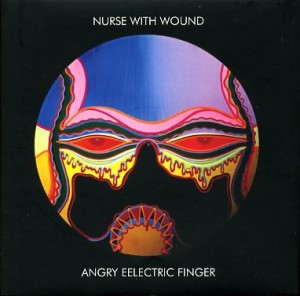Last week I got the news that my friend Matt Shoemaker died on August 12th. It was a bit of a shock, especially as he was only 43, and he has been on my mind quite a bit since. It has been difficult to deal with the fact that I will no longer see this wonderful man. He was easy going, kind, gentle and intelligent. And of course very talented. In addition to the human impression he has left on his friends, Matt leaves behind a legacy of recorded work that impresses and delights, as well as less known but equally wonderful visual work.
I knew Matt for around 20 years. During that time, we interacted in a variety of ways. He bought music from me at Anomalous Records. He provided me with videos and conversation while working for Video Isle. He worked at Anomalous Records for a short time. We played music together, both sharing the bill at concerts and playing together in private. He was a pleasure to hang out and talk with as he was knowledgeable and passionate.
 Matt was one of the few people in Seattle who I know that actually grew up in the area. Although I don’t know too much about his early life, he did mention playing a space rock group as well as creating his own horror make up – fake blood and the like. I met him in 1996 or 1997. It was during this time that I had an actual store front for Anomalous Records and Matt was a regular walk in customer. I suspect he had been working on solo music at this point already, but he didn’t make any mention of it until presenting me with a two CDR demo in 1999. The following year trente oiseaux in Germany would release the CD “Groundless” and followed it in 2002 with “Warung Elusion”. I don’t think the discs were a huge success, but they led to some international recognition and appreciation. After a lull of several years, more releases started appearing, most notably from Helen Scarsdale Agency and Elevator Bath. The final release in his lifetime came on the latter label in 2015. But while his photography graces the covers of many of his releases, I was unaware of his drawing until the release of the “Wayward Set” CDR. Suddenly another secret aspect of Matt was revealed.
Matt was one of the few people in Seattle who I know that actually grew up in the area. Although I don’t know too much about his early life, he did mention playing a space rock group as well as creating his own horror make up – fake blood and the like. I met him in 1996 or 1997. It was during this time that I had an actual store front for Anomalous Records and Matt was a regular walk in customer. I suspect he had been working on solo music at this point already, but he didn’t make any mention of it until presenting me with a two CDR demo in 1999. The following year trente oiseaux in Germany would release the CD “Groundless” and followed it in 2002 with “Warung Elusion”. I don’t think the discs were a huge success, but they led to some international recognition and appreciation. After a lull of several years, more releases started appearing, most notably from Helen Scarsdale Agency and Elevator Bath. The final release in his lifetime came on the latter label in 2015. But while his photography graces the covers of many of his releases, I was unaware of his drawing until the release of the “Wayward Set” CDR. Suddenly another secret aspect of Matt was revealed.
 Throughout these years Matt also presented his music at concerts. Initially he was appearing on stage with a laptop. This was how I remember him on Thursday October 28th, 2004 – the night that I did my first concert with the Moog Voyager. It wasn’t too long after this contrast of my analog and his digital that he turned to collecting modular analog gear. He proudly showed off many custom built and limited run devices which greatly enhanced his live sound as well as his recordings. I believe he was utilizing this gear when we played together at his apartment in April of 2005 and twelve months later when we were joined by Jesse Paul Miller and Carl Lierman. While those collaborations were private, Matt had a much longer running and frequent collaboration with another good friend, Dave Knott. This grew out of the time that they were roommates in the Fremont neighborhood. Billing themselves as Omake & Johnson, they initially attempted to keep their identities a secret. Appearing in this configuration live a few times, they finally released a very limited CDR and slightly larger edition cassette on Matt’s own Human Faculties label. Both Dave and Matt were members of the large ensemble I assembled to play graphic scores in 2006. Matt left early on in the history of what became known as Eye Music, but I enjoyed his contributions and was disappointed when no longer wanted to play with us.
Throughout these years Matt also presented his music at concerts. Initially he was appearing on stage with a laptop. This was how I remember him on Thursday October 28th, 2004 – the night that I did my first concert with the Moog Voyager. It wasn’t too long after this contrast of my analog and his digital that he turned to collecting modular analog gear. He proudly showed off many custom built and limited run devices which greatly enhanced his live sound as well as his recordings. I believe he was utilizing this gear when we played together at his apartment in April of 2005 and twelve months later when we were joined by Jesse Paul Miller and Carl Lierman. While those collaborations were private, Matt had a much longer running and frequent collaboration with another good friend, Dave Knott. This grew out of the time that they were roommates in the Fremont neighborhood. Billing themselves as Omake & Johnson, they initially attempted to keep their identities a secret. Appearing in this configuration live a few times, they finally released a very limited CDR and slightly larger edition cassette on Matt’s own Human Faculties label. Both Dave and Matt were members of the large ensemble I assembled to play graphic scores in 2006. Matt left early on in the history of what became known as Eye Music, but I enjoyed his contributions and was disappointed when no longer wanted to play with us.
Layering on top of this was Matt’s employment at Video Isle. Located in the Fremont neighborhood of Seattle, it is one of the few remaining video rental stores in the city. During his years there Matt was influential in stocking unusual films and encouraging people to explore. Even now you can visit the shop and still see stickers on DVD boxes that say “Matt’s pick”. I think working there allowed Matt an opportunity to be social, which was something I couldn’t offer him during the short stint working for Anomalous Records (he admitted it being a lot harder work there than he expected). He was in the public eye there and no doubt made many friends. For me it was a very accessible way to interact and converse with him, especially as I moved to a house that was literally around the corner in 2003.
 On topic that Matt especially liked to talk about was Indonesia and his travels there. He would spend extended periods exploring and getting immersed in the culture. If I remember right, he was there during the Bali bombings, but luckily stayed away from tourist destinations. He was interested in pushing further and digging deeper. And he brought back a prodigious amount of music cassettes, many of which he later digitized and burned onto CDR for me.
On topic that Matt especially liked to talk about was Indonesia and his travels there. He would spend extended periods exploring and getting immersed in the culture. If I remember right, he was there during the Bali bombings, but luckily stayed away from tourist destinations. He was interested in pushing further and digging deeper. And he brought back a prodigious amount of music cassettes, many of which he later digitized and burned onto CDR for me.
These are just some of the memories that have come back to me. It is sad that he is gone, but I am glad to have known him and spent so much time in his presence.
The three albums of Matt Shoemaker’s work which were published by Elevator Bath are available for free download via the Bandcamp page: https://elevatorbath.bandcamp.com/album/isolated-agent-stranding-behavior, https://elevatorbath.bandcamp.com/album/soundtrack-for-dislocation, and https://elevatorbath.bandcamp.com/album/flight-chromatic-splitting-injunction
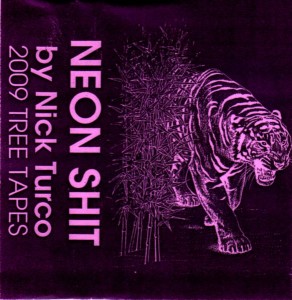
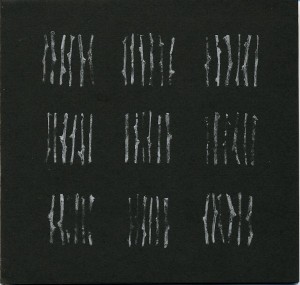 This album is unfortunately named on two accounts. First of all, there are at least 13 other recording artists that have used the name Decibel. Second, there is an earlier release by Alvin Lucier called “Still and Moving Lines of Silence in Families of Hyperbolas”. While it would be interesting to hear the Mexican avant-prog group Decibel performing that early work by Lucier, what we have instead are first recordings of Lucier pieces by an Australian group.
This album is unfortunately named on two accounts. First of all, there are at least 13 other recording artists that have used the name Decibel. Second, there is an earlier release by Alvin Lucier called “Still and Moving Lines of Silence in Families of Hyperbolas”. While it would be interesting to hear the Mexican avant-prog group Decibel performing that early work by Lucier, what we have instead are first recordings of Lucier pieces by an Australian group. With a title that long, you would expect something pretentious. Tarab’s music is on the contrary low key. The Australian artist recorded sound in the San Francisco Bay for this album, although you would not know that as there is no mention of this on the release itself. The press release is informative and I think that writing would have better used had it been included in liner notes with the actual release. The secret location is Angel Island, at one time an immigration state and later a Nike Missile site, yet the notes allude to there being other locations as well. And location does feature prominently here as the final product focuses on the sounds of rooms, with some additionally recorded by Jim Haynes and Matthew O’Shannessy. Jim’s name seems appropriate enough one to bring up when discussing this album as it resembles Haynes’ obsession with rusted structures, decay and the textural sounds associated with them. There are sounds from reverberant and seemingly empty rooms, rustling and scraping objects in them and general crunchy sounds. The scraping comes and goes but never come together into a greater organization. I feel that the compositional structure is too weak to work as a “piece” but has too much interaction and editing to work as a document of place – a pure listening experience. There is a bit of mucking about, but it never coalesces. There is even a section that appears to use digital delay in contrast to the natural effects achieved through most of the disc. To me “Take All the Ship…” sounds unfinished and like it needed to be pushed further in one direction or another to come into its own. The area it works in has been mined too much to excuse a bland work. I can see more sense in going back to older recordings by the likes of Small Cruel Party than revisiting Tarab’s disc. As for the visual end of things, the packaging is nice, but nothing exceptional. There are worn surfaces and peeling paint inside and out, with the out also including a slipcover. The inside cover has a short nautically inspired text which tries to set an atmosphere of doom in disparate sentences that fall between cut-up and Surrealist tendencies, but again don’t stand out.
With a title that long, you would expect something pretentious. Tarab’s music is on the contrary low key. The Australian artist recorded sound in the San Francisco Bay for this album, although you would not know that as there is no mention of this on the release itself. The press release is informative and I think that writing would have better used had it been included in liner notes with the actual release. The secret location is Angel Island, at one time an immigration state and later a Nike Missile site, yet the notes allude to there being other locations as well. And location does feature prominently here as the final product focuses on the sounds of rooms, with some additionally recorded by Jim Haynes and Matthew O’Shannessy. Jim’s name seems appropriate enough one to bring up when discussing this album as it resembles Haynes’ obsession with rusted structures, decay and the textural sounds associated with them. There are sounds from reverberant and seemingly empty rooms, rustling and scraping objects in them and general crunchy sounds. The scraping comes and goes but never come together into a greater organization. I feel that the compositional structure is too weak to work as a “piece” but has too much interaction and editing to work as a document of place – a pure listening experience. There is a bit of mucking about, but it never coalesces. There is even a section that appears to use digital delay in contrast to the natural effects achieved through most of the disc. To me “Take All the Ship…” sounds unfinished and like it needed to be pushed further in one direction or another to come into its own. The area it works in has been mined too much to excuse a bland work. I can see more sense in going back to older recordings by the likes of Small Cruel Party than revisiting Tarab’s disc. As for the visual end of things, the packaging is nice, but nothing exceptional. There are worn surfaces and peeling paint inside and out, with the out also including a slipcover. The inside cover has a short nautically inspired text which tries to set an atmosphere of doom in disparate sentences that fall between cut-up and Surrealist tendencies, but again don’t stand out. Beginning with “Ombre d’erosion” on the A side, we find a shimmering and pulsing drone etched onto the grooves of this translucent slab of yellow. It is appropriate enough given the label, although it is an area that Ralf Wehowsky is less known for having carved a reputation for extreme dynamics. The B side shifts to a more manipulated and twisted sound which points to the fact that the entire record is “built from a few seconds of piano and vocals.” The rest is imagination and from the abstractions appearing here, it would seem that imagination and creative manipulation have more to do with the final result than the specific sources – I feel that RLW could take a few seconds of just about anything and build it into a complete work. That said, the first of the B side’s tracks, “Cellule imaginaire”, does offer hints of the original vocal material, although it is twisted into a backwards chorus. The second piece on this side is “Erosion de l’imaginaire” which evokes the shadow world in between short wave radio station where fragments of voices and electronic signals drift together in sideband modulation. The first side offers something to sink into; the second churns with uneasy yet subdued tension. Unfortunately the cover artwork by Oliver Jakobi doesn’t do much for me, but I suspect that the unidentifiable images are likely to be digital distortions mirroring the processes of the music.
Beginning with “Ombre d’erosion” on the A side, we find a shimmering and pulsing drone etched onto the grooves of this translucent slab of yellow. It is appropriate enough given the label, although it is an area that Ralf Wehowsky is less known for having carved a reputation for extreme dynamics. The B side shifts to a more manipulated and twisted sound which points to the fact that the entire record is “built from a few seconds of piano and vocals.” The rest is imagination and from the abstractions appearing here, it would seem that imagination and creative manipulation have more to do with the final result than the specific sources – I feel that RLW could take a few seconds of just about anything and build it into a complete work. That said, the first of the B side’s tracks, “Cellule imaginaire”, does offer hints of the original vocal material, although it is twisted into a backwards chorus. The second piece on this side is “Erosion de l’imaginaire” which evokes the shadow world in between short wave radio station where fragments of voices and electronic signals drift together in sideband modulation. The first side offers something to sink into; the second churns with uneasy yet subdued tension. Unfortunately the cover artwork by Oliver Jakobi doesn’t do much for me, but I suspect that the unidentifiable images are likely to be digital distortions mirroring the processes of the music.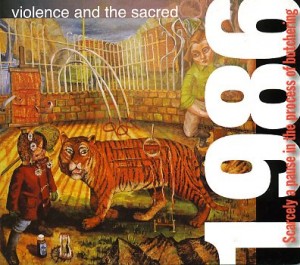 Performed at The Fallout Shelter in Toronto on May 16th, 1986, this disc is the earliest of the mid-1980s improvisation recordings to be issued and is also the most abrasive. Vihuela (a type of guitar) and cello see treatment more in the manner of Derek Bailey and his cohorts, although still are in a sound world that is closer to the realm of experimental music, as they are mixed with synth, beatbox and various tapes which further the density of the music. Scott Kerr’s rhythms even take on an aspect of late Throbbing Gristle in “Time Collapse Agany” (also the name of a side project). St. Deborah’s voice is also more obviously manipulated than in subsequent performances and recordings, driving home the point that she was an off stage member of the group, perhaps embarrassed to be caught reading in public from “The Correct Sadist”, “Anal Pleasure & Health”, and Pat Califia’s hardcore lesbian texts. However, the tendency towards noise and a fascination with sexual deviancy exhibited by Violence and the Sacred are removed from the sound world created at the same time by the likes of Merzbow. You would have to slow down Masami’s junk noise quite a bit to land in the shifting morass of “Scarcely a Pause…”. It does retain the feeling of a aural collage with voices and musical samples coming and going while the live playing ranges from acoustic and musical to heavily processed and abstract. Unfortunately missing from this presentation is the “optical attack” that Potemkin and John Dubiel provided via slides and televisions at the one-off concert. Nevertheless, the original flyer is reproduced under the tray in the Digipak, which also features new and colorful artwork by Stephen Campbell. Dating from 2006-2007, the bit from Campbell’s “Extreme Sports Series” which graces the cover is an appropriately surreal vision of a tiger (lacerations magnified by a looking glass), his trainer (with eyes removed to a chest level ornament), a young person with a glassy look and their penned in area.
Performed at The Fallout Shelter in Toronto on May 16th, 1986, this disc is the earliest of the mid-1980s improvisation recordings to be issued and is also the most abrasive. Vihuela (a type of guitar) and cello see treatment more in the manner of Derek Bailey and his cohorts, although still are in a sound world that is closer to the realm of experimental music, as they are mixed with synth, beatbox and various tapes which further the density of the music. Scott Kerr’s rhythms even take on an aspect of late Throbbing Gristle in “Time Collapse Agany” (also the name of a side project). St. Deborah’s voice is also more obviously manipulated than in subsequent performances and recordings, driving home the point that she was an off stage member of the group, perhaps embarrassed to be caught reading in public from “The Correct Sadist”, “Anal Pleasure & Health”, and Pat Califia’s hardcore lesbian texts. However, the tendency towards noise and a fascination with sexual deviancy exhibited by Violence and the Sacred are removed from the sound world created at the same time by the likes of Merzbow. You would have to slow down Masami’s junk noise quite a bit to land in the shifting morass of “Scarcely a Pause…”. It does retain the feeling of a aural collage with voices and musical samples coming and going while the live playing ranges from acoustic and musical to heavily processed and abstract. Unfortunately missing from this presentation is the “optical attack” that Potemkin and John Dubiel provided via slides and televisions at the one-off concert. Nevertheless, the original flyer is reproduced under the tray in the Digipak, which also features new and colorful artwork by Stephen Campbell. Dating from 2006-2007, the bit from Campbell’s “Extreme Sports Series” which graces the cover is an appropriately surreal vision of a tiger (lacerations magnified by a looking glass), his trainer (with eyes removed to a chest level ornament), a young person with a glassy look and their penned in area. “Arkinoid” was original released on cassette by Sound of Pig in 1987 and like that year’s “Lost Horizons” was recorded live at The Fallout Shelter, although 2 months earlier. Given the close proximity in time, stylistically these two releases are fairly similar, as well as both improvised. Again the quartet uses synth, beatbox, tapes, cello and guitar with the mysterious St. Deborah’s prerecorded voice. Here the narration pulls from Samuel Beckett and Alfred Jarry. The majority of the disc does focus on instrumental passages, but overall does not strike me as significantly different from the previously reviewed “Lost Horizons”. Most of what is said there also applies to this disc. “Arkinoid” does features a bonus track recorded later that summer at Kathedral A which was previously released on the cassette compilation “A View from Somewhere” along side fellow Canadian artists Wigglepig, Sucking Chest Wound, Electrostatic Cat and John Oswald, among others. Because of its similarity, although here using Friedrich Nietszche as a text source, it seamlessly fits in with the rest of the disc. This would seem to replace the October 23, 1986 recording that was featured on the original cassette as the disc’s total time is around 51 minutes. As with others in the series, this comes in a colorful Digipak reproducing portraits of the text’s authors, the original cassette artwork, a section of the original flyer, and a trio of video stills.
“Arkinoid” was original released on cassette by Sound of Pig in 1987 and like that year’s “Lost Horizons” was recorded live at The Fallout Shelter, although 2 months earlier. Given the close proximity in time, stylistically these two releases are fairly similar, as well as both improvised. Again the quartet uses synth, beatbox, tapes, cello and guitar with the mysterious St. Deborah’s prerecorded voice. Here the narration pulls from Samuel Beckett and Alfred Jarry. The majority of the disc does focus on instrumental passages, but overall does not strike me as significantly different from the previously reviewed “Lost Horizons”. Most of what is said there also applies to this disc. “Arkinoid” does features a bonus track recorded later that summer at Kathedral A which was previously released on the cassette compilation “A View from Somewhere” along side fellow Canadian artists Wigglepig, Sucking Chest Wound, Electrostatic Cat and John Oswald, among others. Because of its similarity, although here using Friedrich Nietszche as a text source, it seamlessly fits in with the rest of the disc. This would seem to replace the October 23, 1986 recording that was featured on the original cassette as the disc’s total time is around 51 minutes. As with others in the series, this comes in a colorful Digipak reproducing portraits of the text’s authors, the original cassette artwork, a section of the original flyer, and a trio of video stills.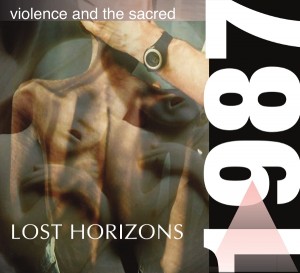 A complete mishmash of sounds competing, blending, overlaying and combining, this 1987 recording comes from a particularly active, at least from the standpoint of releases published, period of this Canadian group’s history. Formed in 1985 to take advantage of an opening slot on a Chris & Cosey concert, the ensemble kept busy through the mid-1990s, eventually disappearing for a while after their 1992 CD for Artware Production in Germany, and finally reforming in 2006. This disc reconnects the two halves of a live performance at The Fallout Shelter in Toronto which were originally split into two cassette releases for Harsh Reality Music and Corrosive Tapes. The music is created from synths, beatbox, cello, guitar and a fair amount of material from pre-recorded tapes. While definitely in an experimental mode, it does avoid falling into the industrial or noise realms so popular at that time as it relies so much on free improvisation. A comparison might be made to H.N.A.S., who were their label mates on Freedom in a Vacuum, and to whom they were absorbed for a one-off H.N.A.S. concert in Toronto in March of 1991. But while H.N.A.S. would drift into the more musical and song based material, Violence and the Sacred keep to a queasy miasma with the voice taking the role of narration. Read by St. Deborah, the majority of the text seems to be drawn from the influential proto-surrealist novel “Les Chants de Maldoror” by Le Comte de Lautréamont. Her voice occupies a forward position, not being obscured by the musicians, although disappearing from the performance for several minutes at a time. The more occluded voices come via the tapes added by the three musicians: Scott Kerr, Graham Stewart, and Ted Wheeler. While many of these sources appear to be drawn from the detritus of popular culture, I also recognize bits of Jim Roche’s monologues and what might be a bit from a Jodorowsky soundtrack. Besides the textual orientation of much of the disc, the music seems apart from the strictly experimental realm due to Ted Wheeler’s languorous guitar soloing throughout. The shifting path does keep a consistent dynamic throughout, never becoming overly bombastic or minimal. Packaged in a four-panel Digipak, the cover includes a few shots of Cal Woodruf and Wheazel Lizard’s multimedia (slids, films, video and projections) visuals from the concert.
A complete mishmash of sounds competing, blending, overlaying and combining, this 1987 recording comes from a particularly active, at least from the standpoint of releases published, period of this Canadian group’s history. Formed in 1985 to take advantage of an opening slot on a Chris & Cosey concert, the ensemble kept busy through the mid-1990s, eventually disappearing for a while after their 1992 CD for Artware Production in Germany, and finally reforming in 2006. This disc reconnects the two halves of a live performance at The Fallout Shelter in Toronto which were originally split into two cassette releases for Harsh Reality Music and Corrosive Tapes. The music is created from synths, beatbox, cello, guitar and a fair amount of material from pre-recorded tapes. While definitely in an experimental mode, it does avoid falling into the industrial or noise realms so popular at that time as it relies so much on free improvisation. A comparison might be made to H.N.A.S., who were their label mates on Freedom in a Vacuum, and to whom they were absorbed for a one-off H.N.A.S. concert in Toronto in March of 1991. But while H.N.A.S. would drift into the more musical and song based material, Violence and the Sacred keep to a queasy miasma with the voice taking the role of narration. Read by St. Deborah, the majority of the text seems to be drawn from the influential proto-surrealist novel “Les Chants de Maldoror” by Le Comte de Lautréamont. Her voice occupies a forward position, not being obscured by the musicians, although disappearing from the performance for several minutes at a time. The more occluded voices come via the tapes added by the three musicians: Scott Kerr, Graham Stewart, and Ted Wheeler. While many of these sources appear to be drawn from the detritus of popular culture, I also recognize bits of Jim Roche’s monologues and what might be a bit from a Jodorowsky soundtrack. Besides the textual orientation of much of the disc, the music seems apart from the strictly experimental realm due to Ted Wheeler’s languorous guitar soloing throughout. The shifting path does keep a consistent dynamic throughout, never becoming overly bombastic or minimal. Packaged in a four-panel Digipak, the cover includes a few shots of Cal Woodruf and Wheazel Lizard’s multimedia (slids, films, video and projections) visuals from the concert.